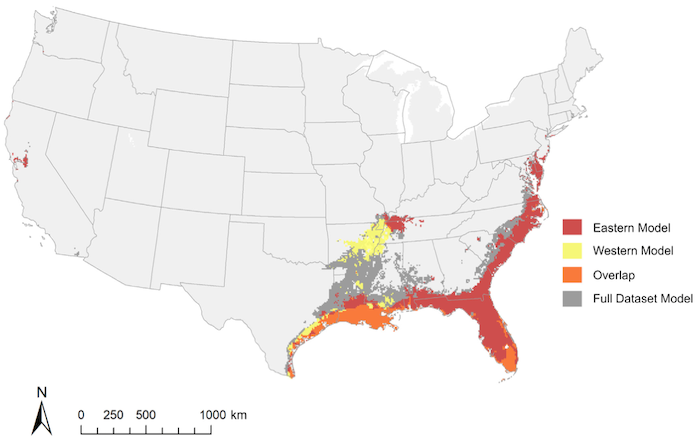
LIPPI, CANFIELD, RYAN – Estimating the distribution of Oryzomys palustris, a potential key host in expanding rickettsial tick-borne disease risk
Catherine Lippi, Samuel Canfield, Christina Espada, Holly Gaff, Sadie Ryan
Article first published online: 15 March 2023
DOI: https://doi.org/10.1002/ecs2.4445
ABSTRACT: Increasingly, geographic approaches to assessing the risk of tick-borne diseases are being used to inform public health decision-making and surveillance efforts. The distributions of key tick species of medical importance are often modeled as a function of environmental factors, using niche modeling approaches to capture habitat suitability. However, this is often disconnected from the potential distribution of key host species, which may play an important role in the actual transmission cycle and risk potential in expanding tick-borne disease risk. Using species distribution modeling, we explore the potential geographic range of Oryzomys palustris, the marsh rice rat, which has been implicated as a potential reservoir host of Rickettsia parkeri, a pathogen transmitted by the Gulf Coast tick (Amblyomma maculatum) in the southeastern United States. Due to recent taxonomic reclassification of O. palustris subspecies, we reclassified geolocated collections records into the newer clade definitions. We modeled the distribution of the two updated clades in the region, establishing for the first time, range maps and distributions of these two clades. The predicted distribution of both clades indicates a largely Gulf and southeastern coastal distribution. Estimated suitable habitat for O. palustris extends into the southern portion of the Mid-Atlantic region, with a discontinuous, limited area of suitability in coastal California. Broader distribution predictions suggest potential incursions along the Mississippi River. We found considerable overlap of predicted O. palustris ranges with the distribution of A. maculatum, indicating the potential need for extended surveillance efforts in those overlapping areas and attention to the role of hosts in transmission cycles.
Read the full publication in Ecosphere.